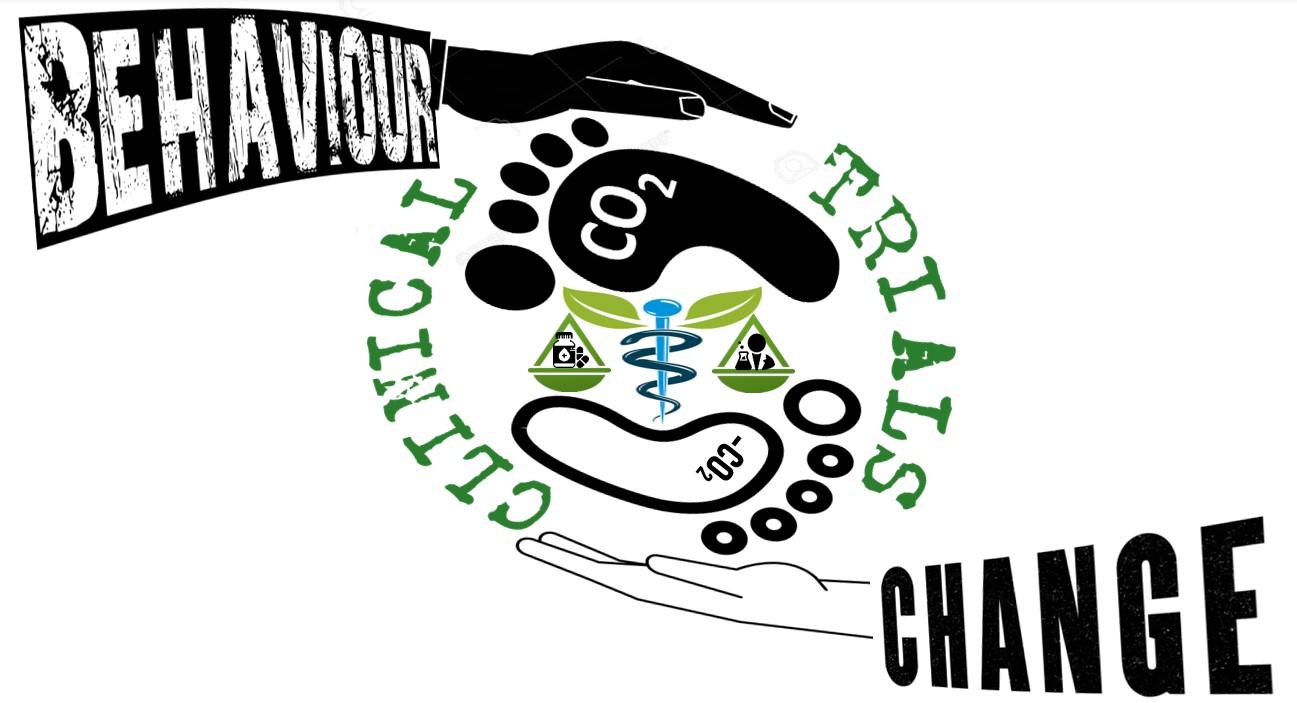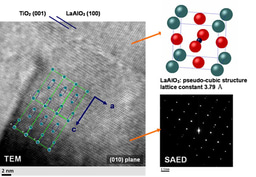Towards Greener Trials
Published in Social Sciences, Earth & Environment, and Biomedical Research

As we celebrate this International Clinical Trials Day to recognize the significance of clinical trials in generating evidence for advancing human health, it is also time to consider how they should evolve to better serve future generations. One area demanding urgent attention is the environmental sustainability of clinical trials, or simply, how to make trials ‘greener’.
The loop of side effects: How clinical trials and climate change feed into each other?
Clinical trials carry considerable carbon footprint as an integral part of healthcare which is responsible for 5% of global greenhouse gas (GHG) emissions. Depending on the method of calculation: The 1.09 million of clinical trials registered on WHO’s International Clinical Trials Registry Platform (ICTRP) by April 2025 potentially account for over 85 million tonnes of carbon dioxide equivalent (CO2e) while another estimate suggests the figure up to 100 million CO2e per year which is comparable to the annual GHG emissions of an entire country of Belgium. Either way, the message is clear: Clinical trials are contributing to human-induced climate change.

Even before the environmental impacts of clinical trials are comprehensively examined, climate change is already disrupting trial conduct. Unusually frequent floods, heatwaves, and storms are affecting participant recruitment and damaging research infrastructure. These disruptions can limit access to trial sites for both staff and participants. Not only are trial safety and efficiency at stake, the cost and waste associated with conducting trials are also likely to be driven up. Failing to address the side effects that clinical trials and environment have on each other is a missed opportunity. After all, planetary health underpins human health which clinical trials are designed to improve.
Greener trials are on the horizon
Clinical trials are complex processes involving a host of different ‘actors’, from funders and pharmaceutical sponsors to clinicians and patients. The concerted efforts of everyone involved in the clinical trial enterprise are essential to achieving carbon reduction. Since the Sustainable Trials Study Group performed the first carbon assessment of an international trial in 2007, awareness of trial sustainability and similar studies had been slow to gain traction until recent years when making trials greener became a priority across relevant parties.
In 2020, the Sustainable Healthcare Coalition (SHC) called for collaboration across public and private sectors to assess and reduce carbon footprint of clinical trials. Their landmark Lancet article argued for prioritizing sustainability in trials and laid the ethical as well as strategic groundwork for decarbonising clinical research. By promoting a systematic approach, it also offered actionable steps such as streamlining trial design, digitising data collection, and reducing travel through decentralised or hybrid models. Since then, a growing number of initiatives and cross-sector collaboration for greener trials have kick-started in earnest on multiple fronts:

Academic and research leadership
Research funders have recognised the critical importance of supporting greener trials. The National Institute for Health and Care Research (NIHR) funded work led by the Institute of Cancer Research (ICR) and the University of Liverpool to develop a carbon footprinting tool and guidelines for trial teams. This work also identified common carbon sources or ‘carbon hotspots’ across trial types, notably operations of clinical trial units (CTUs), trial-related travel and meetings, and emissions associated with patient assessment. The work has informed the development of the Greener Trials Toolkit which offers a structured approach for identifying high-emission components of trial design and proposing alternatives, such as replacing travel-heavy recruitment methods with digital alternatives, consolidating supply shipments, or switching to e-Consent platforms.
More recently, the Wellcome Trust funded the Greener Trials Project led by the University of Liverpool, in collaboration with the ICR, the University of Aberdeen, the South African Medical Research Council (SAMRC), NHS England and the SHC. The research will enable scientists to more rapidly gather the data required for identifying areas of concern, highlighting gaps in existing decarbonisation systems, sharing mitigation strategies, and promoting behaviour change.
Industry engagement
The pharmaceutical industry is working on clinical trial sustainability in tandem. For example, AstraZeneca has introduced its Sustainable Clinical Trials initiative, with an aim of achieving net-zero trials. It encompasses strategies such as adopting decentralised designs, integrating emissions tracking, and using digital platforms to reduce patient and staff travel. Similar initiatives are launched by other companies, too.
In parallel, the SHC has convened the Industry Low Carbon Clinical Trials (iLCCT) consortium, bringing together companies, research organisations, and health networks to align efforts across the private sector. They aim to expedite carbon reduction in trials by co-developing tools, promoting data sharing, and identifying best practices for sustainable trial delivery. This collaboration is helping embed climate responsibility within the broader innovation and delivery frameworks of clinical research.
Collaborative networks and policy development
In the UK, national and cross-sectoral networks are growing to support environmentally responsible research practices as well. The MRC-NIHR Trials Methodology Research Partnership (TMRP) Greener Trials Working Group, for example, provides an international forum for academic, clinical, and industry stakeholders to connect and share ideas on reducing emissions, waste or water use in clinical trials. It also compiles resources on greener trial initiatives, such as NIHR Carbon Reduction Guidelines and UK Clinical Research Collaboration (UKCRC) Greener Monitoring Guidance to support researchers and trialists to incorporate sustainability in their day-to-day decisions.
At a policy level, leading funders and research institutions recently endorsed the Concordat for the Environmental Sustainability of Research and Innovation Practice which set out a shared vision for integrating sustainability into research governance. In alignment with this, the Academy of Medical Sciences published their strategy on enabling greener biomedical research which further highlights the need to accelerate the introduction of greener practices within clinical trials and research.
As trial decarbonisation is a global endeavour, such networks and initiatives have begun to reach out across borders to foster international partnerships and shared solutions. Activities for greener trials are also gathering pace across France, Ireland, South Africa and other countries.
Unanswered questions about greener trials
Despite the progress, multiple challenges, both systemic and technical, remain:

Limitation of current footprinting tools
Most existing carbon footprinting tools focus on direct emissions from trial activities outlined in the protocol while broader environmental impacts (e.g. water and land use, waste production, and intervention manufacturing) remain understudied.
Even within the current scope, results rely on the quality of activity data and access to suitable emission factors, many of which remain proprietary, dated, or not regionally aligned. Guidance assumes average values for factors like hospital staff occupancy or transport emissions, which may not reflect real-world diversity. For example, applying UK-based emission factors to international trials may lead to under- or over-estimation of carbon impacts, particularly where country-specific data is unavailable.
Inconsistent definitions and hotspots
Research shows that carbon hotspots vary by trial type and geography. For example, a comparative analysis of national and international trials found that CTU emissions were the largest contributors across the board, but trial-specific patient assessments became dominant in studies involving more intensive follow-up or procedures. While a scoping review identifies consistent carbon hotspots across previous studies, such as travel, trial facilities, and samples, new hotspots such as data exchange were identified. It shows the need for more diverse case data across trial types.
Practical and resource constraints
The process of carbon footprinting itself is resource intensive. CTUs lack the time and tools to routinely conduct carbon assessments without additional funding, training, and automated tools.
Balance between carbon reduction and research quality
There are trade-offs between designing trials lighter in carbon while maintaining scientific rigour and acceptable to participants. For example, reducing in-patient assessments may lower emissions at the expense of data quality, patient safety, or trial integrity. Some low-emission interventions may carry risks or offer climate benefits in the long run. However, evidence and tools for balancing robust trial design and carbon mitigation measures remain short in supply.
Cultural change for greener trials
The biggest challenge may be cultural and systemic. There remains a perception that environmental sustainability lies outside the remit of medical research. Changing this mindset requires wider education and policy alignment, from early career training to institutional procurement. Coordination between healthcare systems, funders, regulators, and suppliers is essential to reduce upstream emissions and promote sustainable design from the outset.
Key takeaways to make trials greener
While some barriers require systemic reform, there are still practical and impactful steps we can take to green up clinical trials:

Embed sustainability early in design
Most trial-related carbon emissions are pre-set during the design phase. Using the Greener Trials Toolkit to model carbon impacts and make informed decisions, such as whether to use decentralised models, eConsent, and remote follow-ups to minimize carbon footprint, will help.
Include sustainability in trial Standing Operating Procedure (SOP), governance, and ethics review. Appoint green champions and encourage funders to consider environmental impact in grant decisions.
Target known carbon hotspots
Cut down carbon in identified hotspots such as travel and trial facility energy consumption by reducing site visits, combining assessments with routine care, and encouraging remote monitoring.
Use low-carbon vendors and infrastructure
Procure from suppliers with environmental awareness credentials (e.g., ISO 14001, My Green Lab). Choose refurbished or loaned equipment, reusable kits where appropriate, and reduce delivery frequency.
Involve participants
Work with patients and the public to ensure sustainable approaches are acceptable. Discuss preferences for virtual contact, transport, and visit frequency.
Behaviour: The missing link in greener trials?
While progress has been made towards greener trials, most efforts have been dedicated to working out structural and technical solutions. Yet nearly all activities in clinical trials stem from human behaviours. For example, trialists performing in-person recruitment, participants making multiple trips to trial sites, or staff travelling for monitoring visits. Most of these behaviours are contextually dependent and amenable to change but not yet systematically investigated. The success of decarbonizing clinical trials may, therefore, hinge on understanding ‘who needs to do what differently to/for whom and when’ across the trial lifecycle.
My research aims to fill this gap by applying behavioral science to understand what drives trialists’ behaviours in relation to greener trials design and delivery and determine what interventions support the necessary change. As previous behaviour change research offers a robust and evidence-based approach to inform efficient trial design and conduct as well as responses to climate change, my study will add value to the existing greener trials research.

As clinical trials are the gateway to evidence-based medicine and healthcare, we are holding the key to unlock a future of trial design without harming our environment and worsening the climate emergency. Greener trials are no longer an option but a shared responsibility for the generations to come.




Please sign in or register for FREE
If you are a registered user on Research Communities by Springer Nature, please sign in